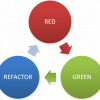The Latest Stories
 |
Does Your Boss Waste Your Time? It's good to eliminate any time-wasting practices, but that can be tricky when they come from your boss. Manager-imposed time wasters include micromanaging, holding unneeded meetings, requiring unnecessary status reports, and issuing ambiguous instructions. Here's how to broach the subject and get some time back. |
|
 |
Make the Most of Your Downtime with the 3 P’s Downtime doesn’t need to mean unproductive time. It doesn’t have to be spent passively waiting for your next assignment. Instead, you can take advantage of your downtime and use it productively. If you want to maximize your downtime but don’t know where to start, focus on the three P’s: product, process, and people. |
|
 |
Who Should Be Doing Automation Work? Testers often look at automation work as the next career step after manual testing. Automation work has more visibility at the project level, and people who do this work usually also tend to have a little more social status. But Justin Rohrman makes a case for why testers shouldn't be the ones doing automation work. |
|
 |
Why State-of-the-Art Technology Needs Art and Tech There’s a longstanding, often passionate debate about art versus design and what separates the two. Now, many advocate that technology presents yet another creative medium, and silos are being torn down as art, design, and technology are increasingly entwined. |
|
 |
Keep Your Code Base Clean with Regular Refactoring The Boy Scouts have a rule: “Leave the campground cleaner than you found it.” You should apply the same principle to your code. Regular refactoring prevents code rot by keeping the code base clean and easy to maintain. Refactoring activities can be added to the product backlog as user stories to make it a discipline. |
|
|
|
Agile Collaboration on Remote Teams The first value in the Agile Manifesto is “Individuals and interactions over processes and tools,” and for many teams, being located in the same place facilitates these interactions. However, being part of an effective, collaborative team is less about location than it is about motivation and good practices. |
|
 |
Simple Ways to Become a Great Listener In this era of multitasking, you probably excel at listening even as you do other things. But it’s not enough to be skilled at listening if, in the process, you convey the impression that you’re not listening. Make sure the people you're communicating with know you're listening to them by employing these simple tips. |
|
 |
6 Signs Your Agile Project Isn’t Really Agile There's a trend of organizations declaring they are agile without actually changing how they develop software. Declaring that an apple is an orange doesn’t make it so. These six key indicators can help you determine whether your agile project isn’t really agile after all—and give you some solutions to help. |







